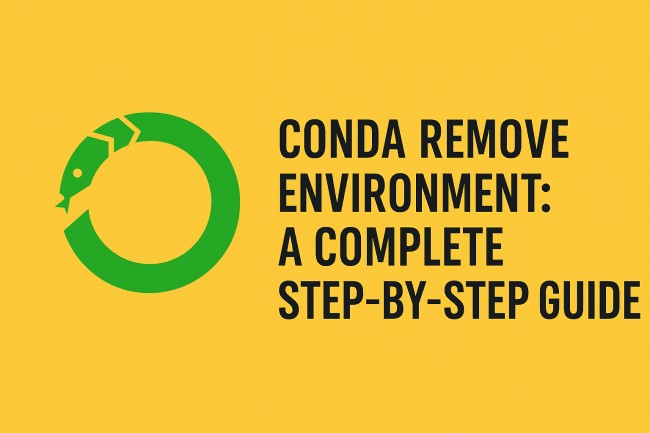Conda Remove Environment: A Complete Step-by-Step Guide

Managing environments efficiently is crucial for maintaining a clean and organized development workflow. In Python development, Conda is a popular package and environment management system that allows developers to create isolated environments for different projects. However, as projects evolve or become obsolete, removing unnecessary environments becomes essential. This article provides a comprehensive guide on how to conda remove environment, with detailed steps, best practices, and tips to keep your workspace clutter-free. We will also explore related concepts like removing conda environment through different methods.
Understanding Conda Environments
What is a Conda Environment?
A Conda environment is a self-contained directory that contains a specific collection of packages, dependencies, and even a particular version of Python. These environments are isolated from each other, ensuring that changes in one do not affect others. This isolation is particularly useful when working on multiple projects with different requirements.
Why Remove Conda Environments?
Over time, developers often create multiple environments for experiments, testing, and different projects. Many of these environments may become outdated or unused. Keeping them consumes disk space and can make your environment list cluttered. Removing them is essential to:
-
Free up storage space
-
Maintain an organized workflow
-
Reduce confusion when switching between environments
-
Improve overall system performance
How to Conda Remove Environment
Step 1: Identify Available Environments
Before removing an environment, you must know its name. Use the following command to list all existing environments:
Or alternatively:
This will display all environments along with their paths. The currently active environment will be marked with an asterisk *.
Step 2: Deactivate the Current Environment
If the environment you want to remove is currently active, you must deactivate it first:
This ensures you are not inside the environment you are trying to delete.
Step 3: Remove the Environment by Name
Once you have identified the environment name, you can remove it using this command:
Replace myenv with the actual environment name. This will permanently delete the environment and all installed packages within it.
Step 4: Verify the Removal
To confirm the environment has been successfully removed, run:
The deleted environment should no longer appear in the list.
Alternative Methods for Removing Conda Environments
Removing Environment by Path
In some cases, you might know the full path of the environment instead of its name. You can remove it using:
This is useful when the environment name is unclear or if multiple environments have similar names.
Manual Removal (Advanced)
If the above commands do not work, you can manually delete the environment directory from your file system. This method is not recommended unless necessary:
-
Locate the environment directory, usually found in
anaconda3/envs/orminiconda3/envs/. -
Delete the folder corresponding to the environment name.
Caution: Manual deletion bypasses Conda’s cleanup processes, so use it carefully.
Best Practices for Removing Conda Environments
Clean Up Regularly
Regularly reviewing and removing unused environments prevents clutter and keeps your system clean. Schedule periodic cleanups, especially after completing major projects.
Use Descriptive Names
Naming your environments clearly makes it easier to identify which ones can be safely removed later. Include project names or purposes in the environment name.
Backup Before Removing
Before removing an environment, export its package list. This allows you to recreate it later if needed:
Common Issues When Removing Conda Environments
Environment Still Appears After Deletion
Sometimes, even after running the removal command, the environment might still appear. This can happen if the environment directory was not fully removed. In such cases:
-
Restart your terminal and run
conda env listagain. -
If it still appears, manually delete the environment folder.
Permission Errors
If you encounter permission-related errors, especially on shared systems, try running the command with administrator privileges or ensure you have write access to the Conda directory.
Benefits of Removing Unused Conda Environments
-
Improved System Performance: Fewer environments mean faster environment listings and less overhead on Conda.
-
More Disk Space: Old environments can take up gigabytes of space.
-
Simplified Project Management: Less confusion and easier navigation between active projects.
Related Keywords and Concepts
Removing Conda Environment
The term “removing conda environment” refers to the same process of deleting environments you no longer need. Understanding this helps in maintaining a minimal and efficient development setup. Whether you use the term “conda remove environment” or “removing conda environment,” the steps and principles remain the same.
Conclusion
Learning how to conda remove environment is an essential skill for anyone using Conda to manage their Python projects. By regularly cleaning up unused environments, you can keep your system organized, improve performance, and free up valuable disk space. Always remember to deactivate the environment before removal, back up any crucial dependencies, and verify that the environment has been successfully deleted.



